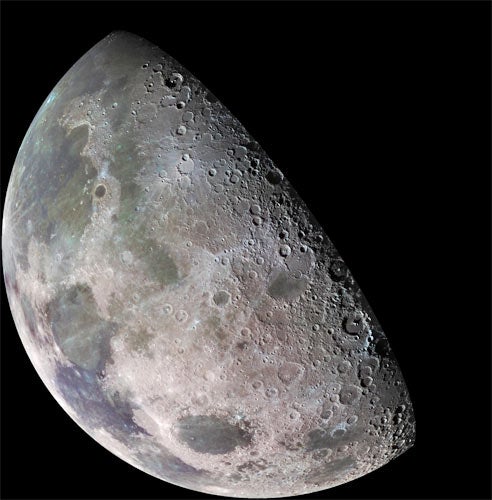The Big Splat: collision may have created lopsided Moon

The Earth may once have had two moons which collided several billions of years ago – not so much with a bang but with a "splat" – to form the lopsided lunar landscape that exists today, scientists said.
Astronomers have long wondered why the mountainous far side of the Moon with its thick crust is so different from the relatively flat, crater-filled near side that always faces the Earth.
Two planetary scientists have provided a possible answer to the conundrum with a computer model showing that the early Moon collided with a smaller companion which ended up being stuck on to the lunar far side.
The unequal nature of the collision produced a lopsided Moon and it could only have occurred in this way because it happened relatively slowly at less than the speed of sound, according to Erik Asphaug and Martin Jutzi at the University of California.
If the collision had happened any faster then a giant crater would have been created by the much smaller secondary moon, spreading the debris far and wide rather than concentrating it on just one of the lunar hemispheres, the researchers suggest in their study published in the journal Nature.
"It requires an odd collision. Being slow, it does not form a crater but splats material on to one side," Professor Asphaug said.
Subscribe to Independent Premium to bookmark this article
Want to bookmark your favourite articles and stories to read or reference later? Start your Independent Premium subscription today.

Join our commenting forum
Join thought-provoking conversations, follow other Independent readers and see their replies